FAQs
Where do I get information on new soft drink brands?
For overall industry trends, visit any of the following sites:
For specific brands from a particular bottler, click here.
How do I connect with a local bottler on charity sponsorships?
Kentucky’s soft drink bottlers care about their local communities, and many sponsor various events and programs. We recommend finding your local bottler on our members section. When you contact them, please provide as much information as possible about your group or program. If your program is statewide, consider sending a request to us at the Kentucky Beverage Association.
How is the beverage industry impacting children’s health and wellness in schools?
Our industry is doing its part to impact children’s health and wellness. For example, the beverage industry joined with the Alliance for a Healthier Generation to develop new School Beverage Guidelines that remove full-calorie soft drinks from all schools and provide students with lower-calorie, smaller-portion beverage options. It’s all part of a broader effort to teach children about the importance of a balanced and healthy lifestyle. Additionally, the beverage industry makes a wide variety of beverages that can help contribute to good health, such as bottled waters, 100 percent juice, sports drinks, ready-to-drink teas and no- and low-calorie soft drinks.
Does the consumption of soft drinks cause obesity problems?
Obesity is a complex problem that is influenced by many factors, most importantly diet, exercise and genetics. It is not feasible to blame any one food product or beverage as being a sole contributor to obesity problems considering people consume calories from many different sources. No science supports such a claim. The key to living a healthy lifestyle is to incorporate a balanced, healthy diet that balances calories consumed and calories burned through activity and exercise.
Why did the beverage industry decide to pull full-calorie soft drinks from schools?
Schools are a unique environment and we understand that parents desire greater control over their children in the school setting. The School Beverage Guidelines were developed with parents in mind to ensure more control over children’s beverage choices during school hours.
We believe soft drinks can be part of a balanced, healthy lifestyle. It is totally appropriate for parents to give their child a soft drink. And it is very appropriate for teenagers to choose a soft drink as a refreshment.
What can be done to help combat childhood obesity?
We need to start doing the hard work of teaching our children how to incorporate different foods and beverages into a balanced diet and to develop an active lifestyle. These are the most important lessons we can teach children that will have a lasting impact on health and wellness.
Does high fructose corn syrup (HFCS) uniquely contribute to obesity?
Absolutely not. In fact, in 2008, the American Medical Association (AMA) issued a statement at its annual meeting saying that HFCS is not a unique contributor to obesity – an important affirmation that undermines the inaccurate claims of critics of this sweetener. The AMA said it reached its conclusion after studying current research.
We know that HFCS affects the body in a manner similar to table sugar. Many people confuse HFCS with fructose because of the similar names, but three new scientific studies and one new scientific review show that HFCS acts no differently than table sugar in the human body. Here’s why: Most types of HFCS contain about 55 percent fructose and 45 percent glucose, while table sugar is 50 percent fructose and 50 percent glucose, so they’re fundamentally very similar. The name “high” fructose corn syrup is really a misnomer.
What about recent allegations that HFCS use has increased in recent decades as obesity rates have skyrocketed? Aren’t they related?
HFCS use has greatly increased from 1970-1990, and obesity also has increased during that same time. That does not mean, however, that HFCS causes obesity. For example, in England, Egypt and Brazil, the rates of increase in obesity are just as high as in the U.S. – and those countries do not use HFCS in beverages.
Are children drinking more full-calorie soft drinks today?
Actually, kids are drinking fewer full-calorie soft drinks and increasing their consumption of other beverage choices. Research shows full-calorie soft drink consumption actually has decreased 24 percent in schools (2002-2004) while sales of bottled waters, sports drinks, 100 percent juices and diet drinks rose 36 percent. This is the result of proactive industry efforts to provide more beverage choices for students, who are now choosing nutritious and lower-calorie beverages.
What beverages can help contribute to children’s health?
The beverage industry provides many beverage options that can serve as a catalyst for good health, such as bottled waters, 100 percent juices, sports drinks and low-calorie soft drinks. Additionally, all beverages can help children meet their daily hydration needs. The beverage industry also makes many beverage choices that contribute to good health through the addition of nutrients and vitamins.
Do soft drink beverages contribute to poor dental health?
You cannot single out one food or beverage as causing dental caries or erosion considering so many factors determine individual dental health. These include the types of food consumed, the length of time foods are retained in the mouth and the level of oral hygiene and access to professional dental care. For instance, sticky foods that tend to stay in the mouth longer and/or cling to teeth can be a significant source of dental cavities. In contrast, liquids that contain sugar, such as soft drinks or sweetened beverages, clear the mouth quickly.
Has the number of dental cavities increased over the years?
The number of dental cavities has been decreasing steadily in the past several years. In a 2005 report, the federal Centers for Disease Control and Prevention (CDC) documented improvements in oral health among the civilian U.S. population, finding, “The decline in the prevalence and severity of dental caries in permanent teeth, reported in previous national surveys, continued during 1988-1994 and 1999-2002. This decline has occurred in both crowns and roots, across sex, race/ethnicity, poverty status, education level and smoking status. It has benefited children, adolescents and adults.
Do sports drinks impact teeth enamel more than other drinks?
There is no single cause of dental erosion, and there are numerous factors that can contribute to it besides various foods and beverages. A person’s susceptibility to dental erosion varies depending on a person’s behavior, lifestyle, diet and genetic make-up. General dental health has improved due to many factors, including better oral hygiene, water fluoridation and frequent dental check-ups.
The facts demonstrate that there are multiple causes of dental erosion and many protective factors that can help prevent or minimize it. It is irresponsible to blame foods, beverages or any other single factor for enamel loss and tooth decay.
What are mandatory deposit programs?
While exact requirements vary by state, all mandatory deposit programs (commonly known as bottle bills) share common elements. They all impose a mandatory, pre-paid fee on certain beverage containers; require consumers to drive containers to designated locations to reclaim the fee; require retailers or redemption centers to take back returned containers; create new environmental burdens from increased fuel consumption and greenhouse gas emissions to return and collect containers; and require significant new infrastructure (equipment, staff, and facilities) to manage beverage containers separately from other products and packaging.
Which states have mandatory deposit programs?
Oregon passed the first bottle bill in 1971, followed by Vermont, Michigan, Maine, Iowa, Connecticut, Delaware, Massachusetts and New York. California’s unique system has been in place since 1986. Finally, Hawaii passed a deposit law that took effect in 2005. The city of Columbia, Missouri passed the only municipal deposit in 1977, but voters repealed it in April 2002. All these states have ongoing debates about the merits of their deposit programs, with some arguing for maintaining or expanding programs while others are pressing for elimination or reform.
How much do deposit systems cost?
Operating costs of deposit programs are at least four times the cost of comprehensive recycling, and newer programs such as those in California and Hawaii have high state costs, as well. California has hundreds of employees working on its bottle deposit system, with oversight costs alone totaling over $50 million per year. Deposit programs raise costs for businesses, which means higher prices for consumers, most notably those with lower incomes.
What beverages are good choices for hydration purposes?
Most beverages will help hydrate the body and contribute to good health and wellness. The beverage industry offers many different choices for consumers depending on their own tastes and circumstances. These include bottled water, teas, 100 percent juices, juice drinks, sports drinks, soft drinks and dairy-based beverage options. According to the Institute of Medicine, all of these beverages, including those with caffeine, provide hydration.
What benefits do sports drinks provide?
During exercise, our bodies sweat to produce a cooling effect. Unfortunately, sweating also results in a loss of fluid and electrolytes like sodium and potassium from our bodies, and these losses must be replaced. Research findings have concluded that sports drinks are the best way to replenish fluid and electrolyte losses, as plain water can further dilute sodium levels in the blood. Decreased levels of sodium, also known as hyponatremia, have been associated with decreased performance during exercise.
Does drinking soft drinks cause obesity?
No one food product or beverage is a unique contributor to obesity. Obesity is a complex problem that is influenced by many factors; the most important being diet, physical activity and genetics. The key to living a healthy lifestyle is to incorporate a varied, healthy diet that balances calories consumed and calories burned through activity and exercise.
Are sugar substitutes used in diet soft drinks safe?
Sugar substitutes have gone through numerous studies to validate their safety and have obtained approval from regulatory agencies around the world, including the World Health Organization (WHO), U.S. Food and Drug Administration (FDA) and the European Food Safety Authority (EFSA).
Do sugar substitutes in any way increase the risk of cancer
Numerous credible scientific bodies such as the U.S. Food and Drug Administration (FDA) and the European Food Safety Authority (EFSA) have examined this issue and declared sugar substitutes safe for human consumption.
Don’t energy drinks have excessive caffeine?
No. In fact, a typical mainstream energy drink has about the same amount of caffeine as home-brewed coffee and less than half the amount of caffeine as a similar-sized cup of coffeehouse coffee. For example, a typical 16-oz energy drink contains about 160 mg of caffeine, while a typical 16-oz cup of coffeehouse coffee has about 330 mg of caffeine. A typical 8.4 oz energy drink contains 80 mg of caffeine.
How many energy drinks should an individual drink per day?
Like most foods and beverages, the key to healthful consumption is variety and moderation. According to the National Library of Medicine and the National Institutes of Health, “there is no human requirement for caffeine in the diet. Moderate caffeine intake, however, is not associated with any health risk.”
Resources
View more helpful resources such as industry terms, fun facts and links.

